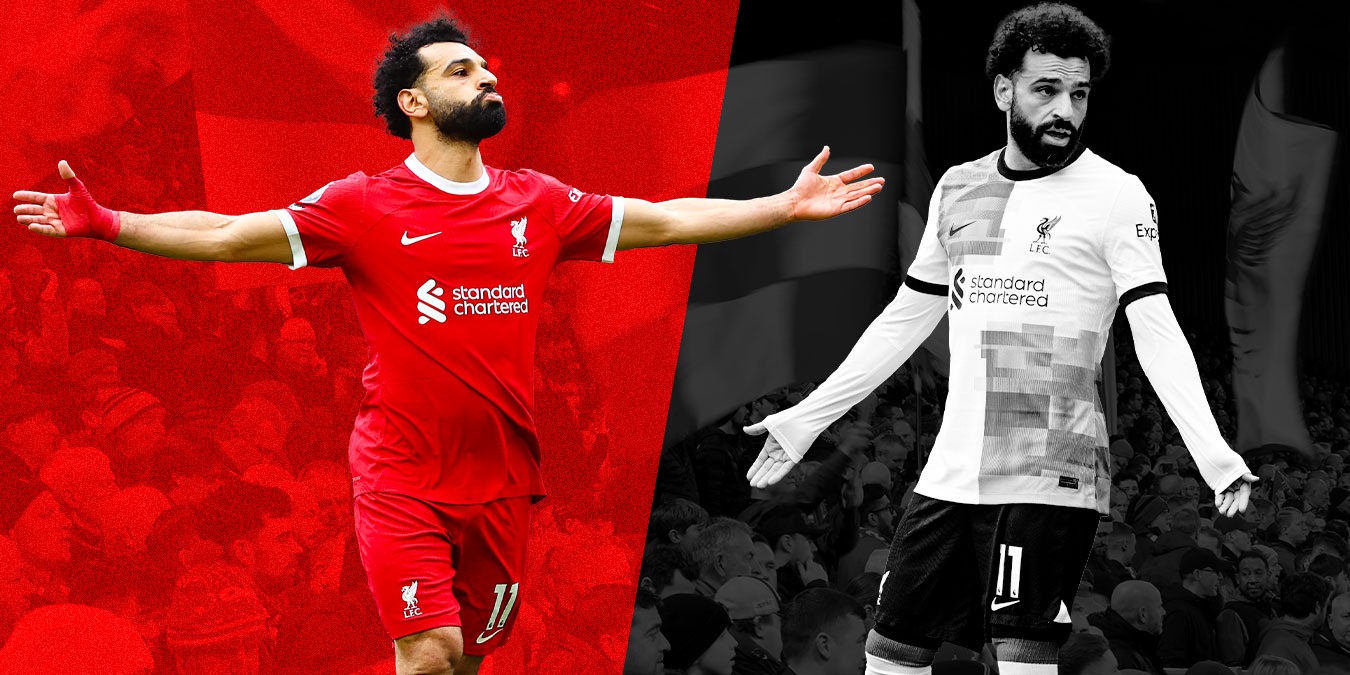After an outburst toward his manager last week, questions have been asked about Mohamed Salah’s future at Liverpool. We look at the Egyptian’s form since his return from injury.
It almost feels like sacrilege to question Mohamed Salah.
Undoubtedly one of the best players of his generation, in the argument for the greatest player in Liverpool’s history, and someone who has 24 goals in 41 games in all competitions this season.
Only a few months ago, Salah scored his 200th goal for Liverpool, and now has 210 goals and 86 assists in 346 games in all competitions for the club.
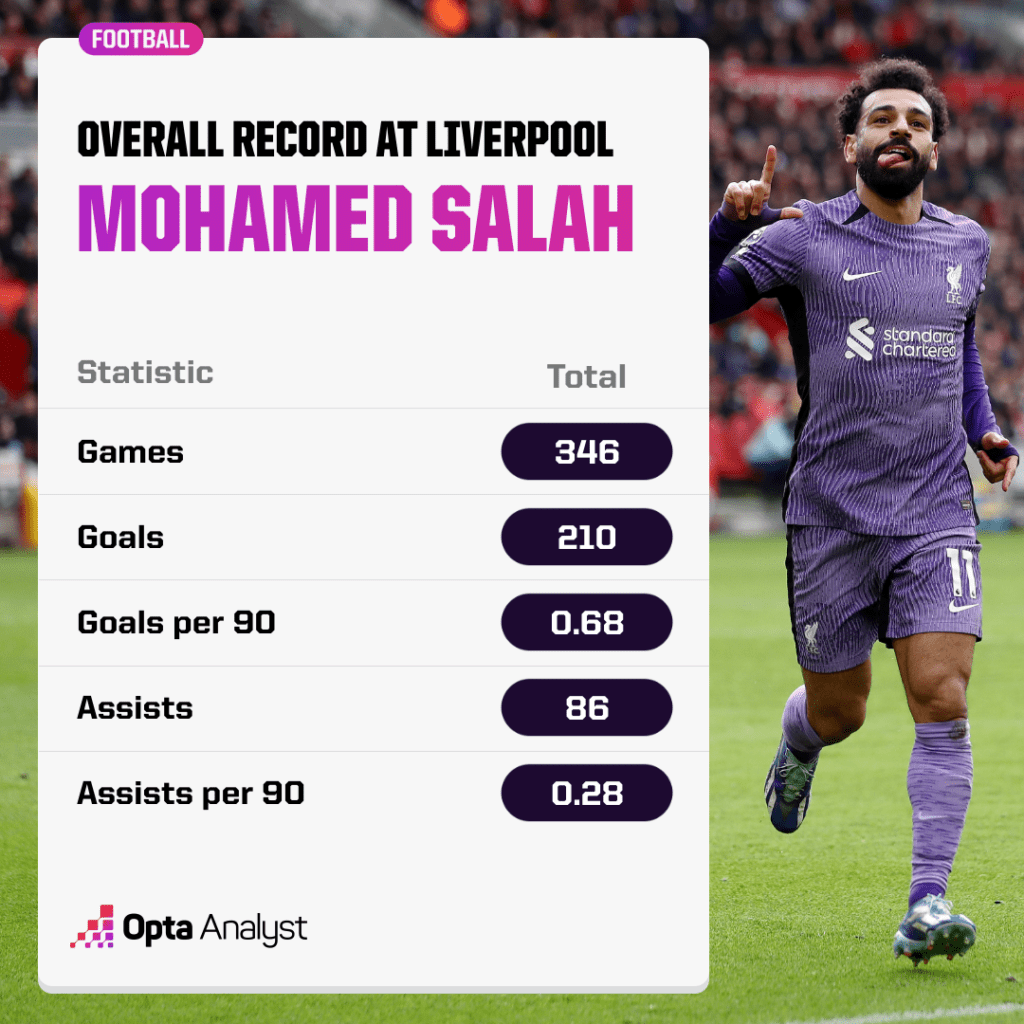
However, approaching the end of his seventh season at Liverpool – where he has won the Premier League, FA Cup, EFL Cup, Champions League, FIFA Club World Cup, UEFA Super Cup and Community Shield – questions are starting to be asked about whether Salah’s future should be at Anfield beyond this campaign.
The player’s current deal expires in 2025, and though reports suggest the club intend to keep him this summer and the player is in no rush to leave, recent events have made the certainty of Salah continuing in the famous red shirt less clear. Can Liverpool afford to lose him for free next year, or extend the contract of their highest earner if his output is on a downward slope?
All was rosy at Liverpool seven weeks ago. They had won the EFL Cup even with Salah out injured, were through to the quarter-finals of both the FA Cup and Europa League, and were very much in the Premier League title race.
Salah returned from injury in early March and it seemed the table was set for the ‘Egyptian King’ to help push Liverpool to further glory in the closing months of Jürgen Klopp’s final season at the club.
Fast forward to last Saturday and Salah was seen arguing with his manager on the touchline as Liverpool were about to drop yet more points in their probably-already-extinguished title challenge, having also been dumped out of the FA Cup and Europa League in the weeks prior.
Klopp drew a line under the incident at Friday’s press conference ahead of the Tottenham game, saying: “It’s completely resolved, there is no problem between us. If we didn’t know each other that long, I’m not sure how we’d deal with it. But we respect each other, so it’s really no problem.”
Something that is a problem is that after winning just one of their last five league matches (D2 L2), Liverpool are surely out of the race for the title, with their finishing in particular costing them of late.
After averaging a shot conversion of 11.7% in the Premier League up until they played Manchester United at Old Trafford in early April, they have since only converted 6.1% of their shots in their last five league games. Only Nottingham Forest (5.7%) and Brighton (2%) have been less efficient in front of goal in that time.
As their chief goalscorer, Salah has had to shoulder a lot of the blame in recent weeks, though the capitulation of Liverpool’s season since Salah’s comeback has far more factors at play than just his reintroduction to the team.
He was only named on the bench for recent league games against Fulham and West Ham, something Salah has not been used to over the years, and it seemed to be the last straw for the player as he openly shouted at his manager at London Stadium. He then told reporters in the mixed zone after the 2-2 draw last Saturday that there would be “fire” if he spoke to them. Klopp probably wishes he’d seen more of that fire on the pitch in recent games.
All of this has led to questions being asked about whether Salah’s best days are behind him. Given he turns 32 in June, you would say that’s almost certain to be the case. But has his output this season really been worthy of questioning his future?
In the first half of the 2023-24 campaign, before he left for the Africa Cup of Nations in early January, Salah recorded 26 goal involvements in 27 games in all competitions (18 goals, 8 assists), of which 13 were non-penalty goals. Following AFCON and his recovery from an injury suffered during the tournament in Ivory Coast, Salah has made 14 appearances, managing 10 goal involvements (6 goals, 4 assists), of which four were non-penalty goals.
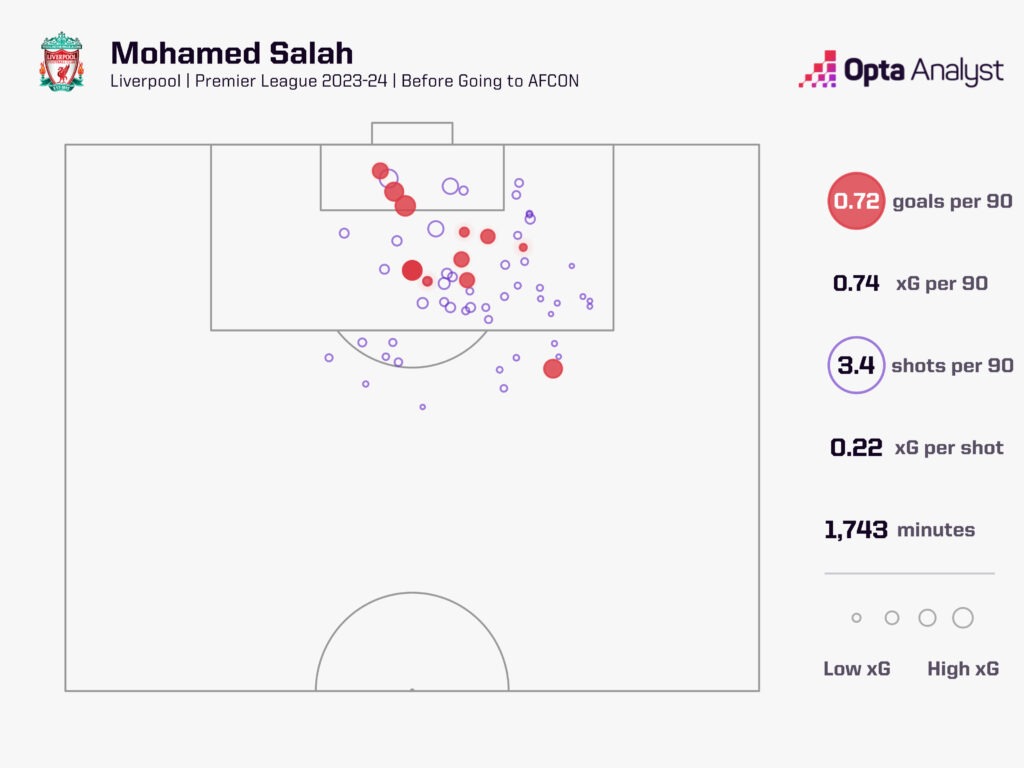
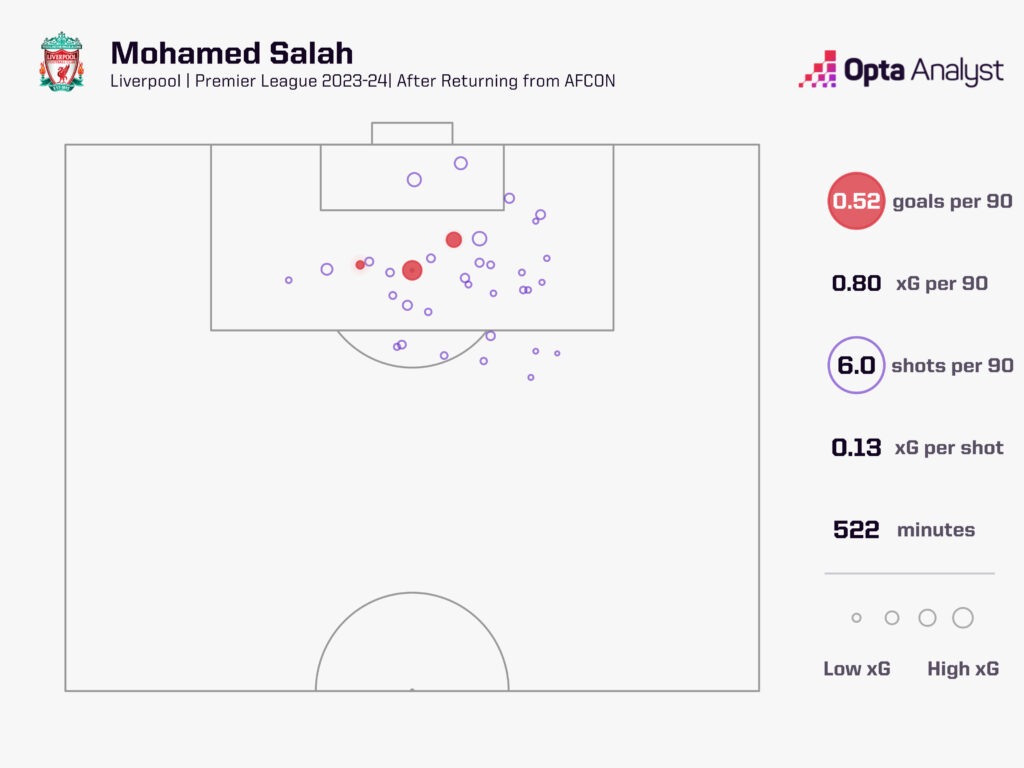
One of the most important things about Salah for Liverpool has been his availability. He has never played fewer than 4,000 minutes in a season since moving to Merseyside in 2017. He needs to play another 140 minutes to reach 3,000 for this season, while his 10 sub appearances is at least four more than any previous season with Liverpool.
As for his output this season, we’ll look at just his Premier League numbers due to the fact Liverpool have been playing in the Europa League rather than the generally stronger Champions League.
Firstly, it should be noted that from his seven seasons at Liverpool, this has been Salah’s most productive for chances created from open play (2.34) and big chances created (0.85) per 90 minutes. It is his worst for passing accuracy in the final third (73%), but it feels like that’s partly due to him trying to play more killer balls to the likes of Darwin Núñez and Luis Díaz.
It’s also his third-best for goals per 90 (0.68), though only his fifth-best for non-penalty goals (0.48).
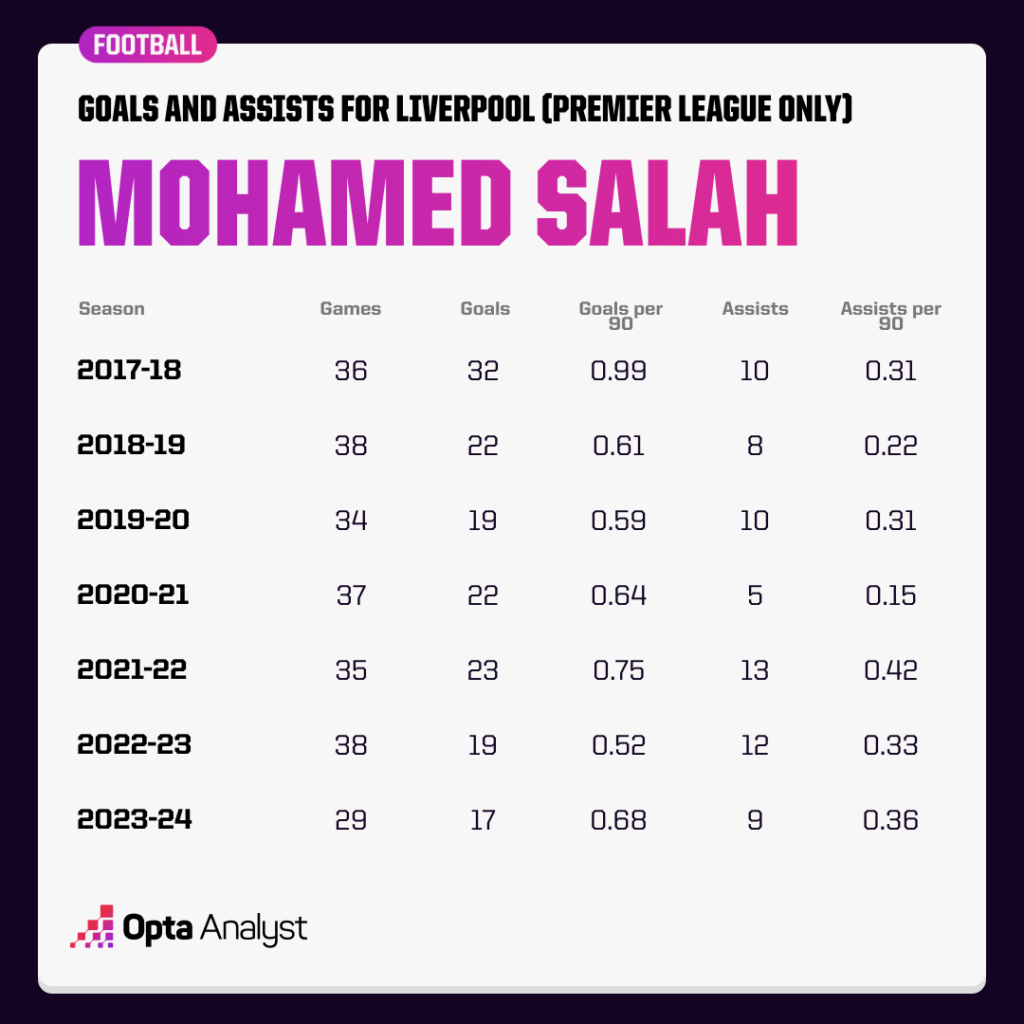
Salah has never been as active as others defensively, but this has been his third-best season so far for the club for possession regains per 90 (3.1), and his second-best for possession regains in the final third per 90 (0.95).
It is something he’s been criticised for plenty in recent weeks, but Salah is not really losing possession any more than usual. The number of times he is losing possession per 90 is 16.3, below three of his previous league seasons for Liverpool.
An area where Salah’s output has certainly been regressing is his dribbling. In his first two seasons at Liverpool, he dribbled a lot and with great success. He attempted 4.3 dribbles per 90 with 56% success in 2017-18, and 4.7 dribbles per 90 with 47.9% success in 2018-19. That dipped to under three per 90 in the next two seasons, with a big drop in success from 53.2% in 2019-20 to 36% in 2020-21. It shot back up to 4.4 dribbles per 90 in 2021-22, and then went to 3.7 per 90 last season and is just 3.1 this. His 31.2% success rate this season is the lowest it has ever been.
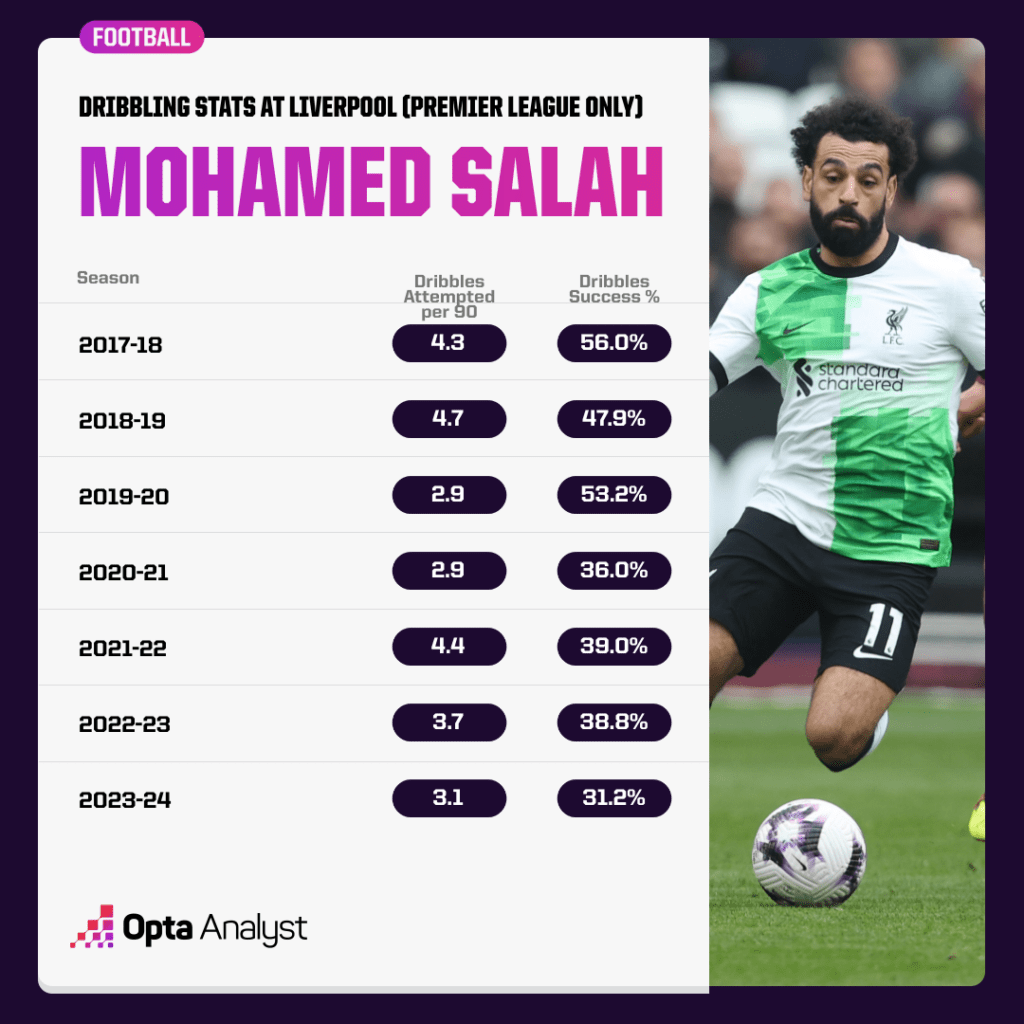
His dribbling quantity and quality has dropped off, which probably explains his apparent desire to be more adventurous in his passing and subsequent rise in chances created. Is that it then, or is there more to his apparent dip in form since returning from injury?
Liverpool beat Newcastle United 4-2 on New Year’s Day with Salah integral in his last appearance before he went away to AFCON. Let’s look at his stats up to and including that game, and compare it to his data since AFCON.
Unsurprisingly, his goals per 90 has dipped from 0.72 to 0.52, and 0.52 non-penalty goals to 0.34, while his assists per 90 have gone down from 0.41 to 0.17. His chances created from open play have only gone down slightly from 2.4 to 2.2, so he is still active in trying to provide scoring opportunities for his teammates.
However, his total shots per 90 has soared from 3.4 to 6.0, suggesting Salah is often trying to force it too much. His non-penalty expected goals have risen from 0.49 to 0.66 per 90, but his shot conversion rate has plummeted from 21.5% to just 8.6%. His big chance conversion has dropped from 60% to 33.3%, while his tackles attempted per 90 have gone down from 0.67 to just 0.17.
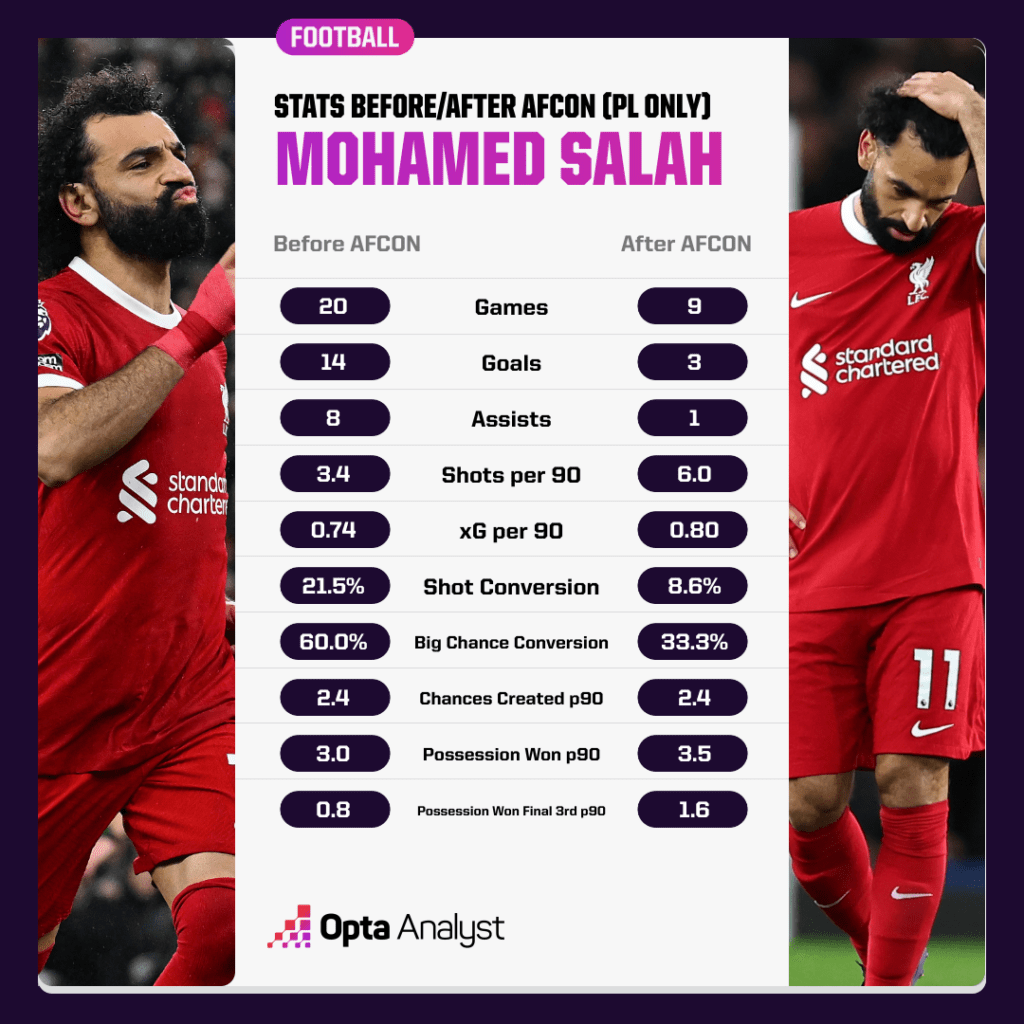
Despite that last statistic, Salah has been winning possession more regularly in the second half of the season, up to 3.5 times per 90 from 3.0, while he has won possession in the final third twice as often – 1.6 times per 90 up from 0.8. And after asking if his decline in dribbling potency was to blame for making his recent appearances stand out more, his dribble success rate has actually improved since his return, up to 38.9% from 28.8% earlier in the season.
With Arne Slot reportedly set to be Liverpool’s new manager, we also have to consider if Salah will fit in with the Dutchman’s approach? At Feyenoord this season, Slot has mostly used Newcastle loanee Yankuba Minteh on the right of his front three, and as you can see from the heat maps below, Salah and Minteh broadly cover the same ground, though the Egyptian does cover more.
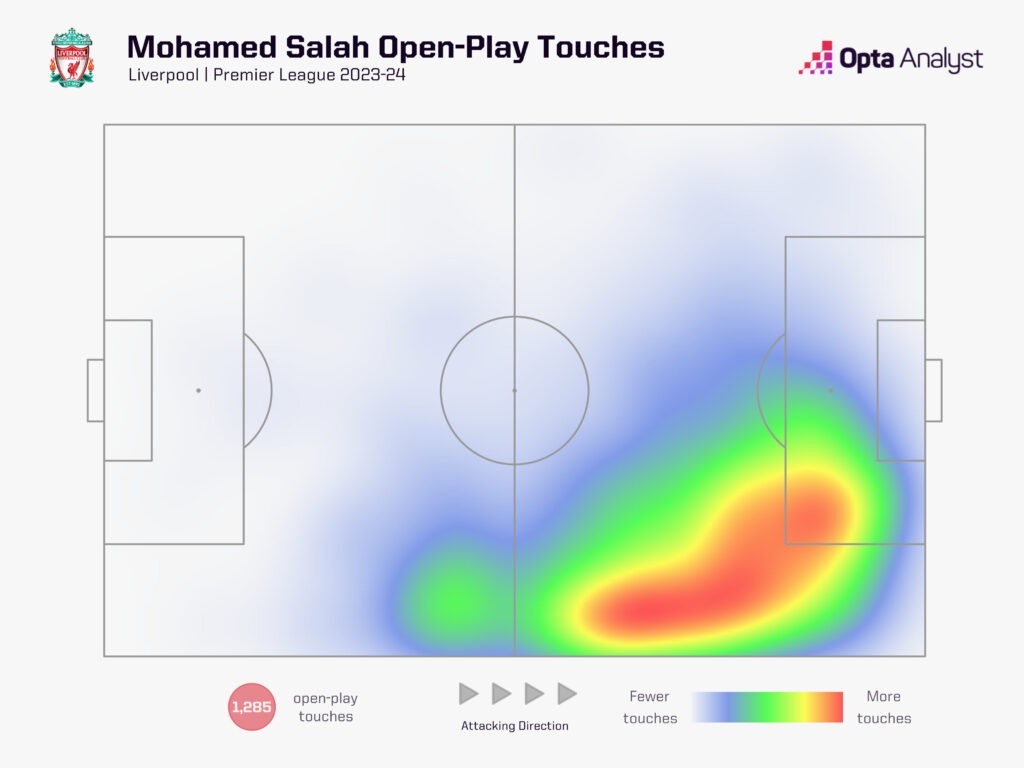
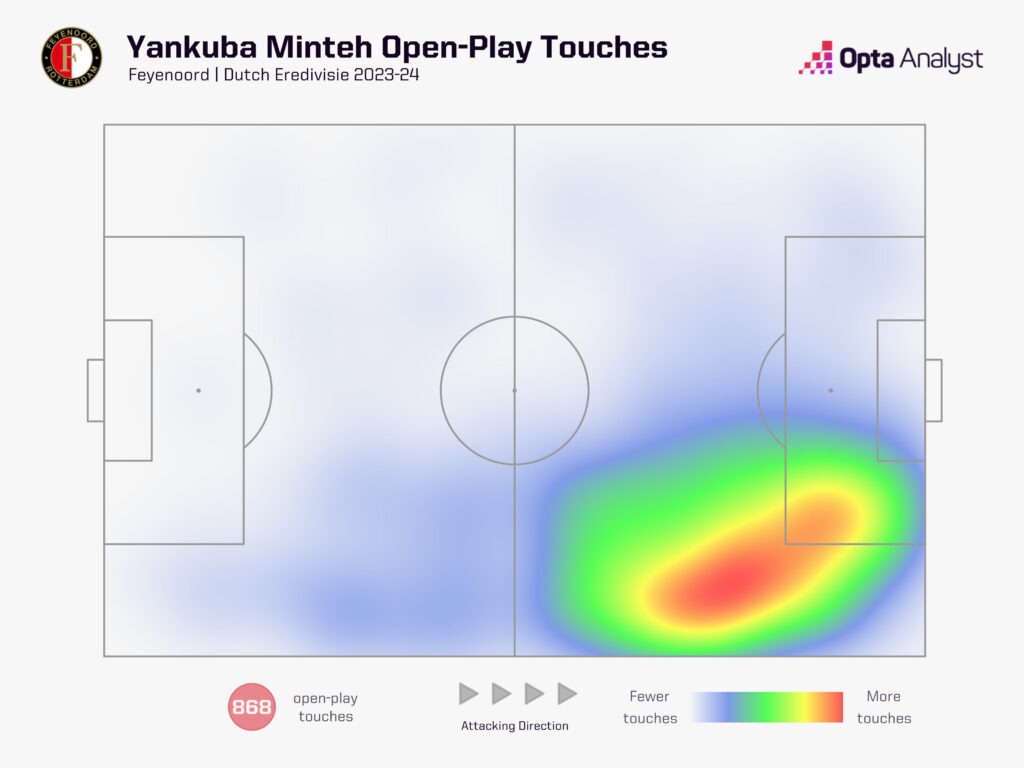
The difference in the strength of the respective leagues must be borne in mind, but Minteh’s numbers in the Eredivisie this season are somewhat similar in areas. He has averaged 0.59 non-penalty goals per 90, 0.33 assists, 1.65 open-play chances created (very close to Salah’s total from 2022-23 of 1.69), while Minteh attempts marginally fewer shots per game (3.4) and creates almost as many big chances (1.05), while his shot conversion rate is only 0.65% better than Salah’s.
One sticking point for Slot, though, could be Salah’s decline in dribbling. Minteh is not only attempting far more dribbles than Salah does now, but he’s doing so at a rate beyond anything the Egyptian has produced before. Salah’s most active Premier League season for dribbles attempted was 2018-19 when he averaged 4.7 per game. Minteh, who is 19 years old, has averaged 7.8 this season, with a respectable success rate of 46.1%. If Slot needs Salah to increase his dribbling attempts that drastically, frankly, it might be beyond a man about to turn 32.
Then again, those numbers from Minteh are particularly high; only six players in Europe’s top 10 leagues to have attempted at least 100 dribbles this season have done so at a higher per 90 rate. Perhaps that has more to do with the player than Slot’s instructions, so he might not require Salah to do similar.
Another question must be whether Liverpool could cope without Salah.
Since their star player left for AFCON in January, Liverpool have played 10 games without him starting in the Premier League. Of those, they have won seven, drawn two and lost one, scoring an average of 2.7 goals per game and conceding 1.1, earning an average of 2.3 points per game. In the five games Salah has started in that time, Liverpool have won two, drawn one and lost two, averaging 1.4 goals per game, 1.4 goals against per game, and 1.4 points per game.
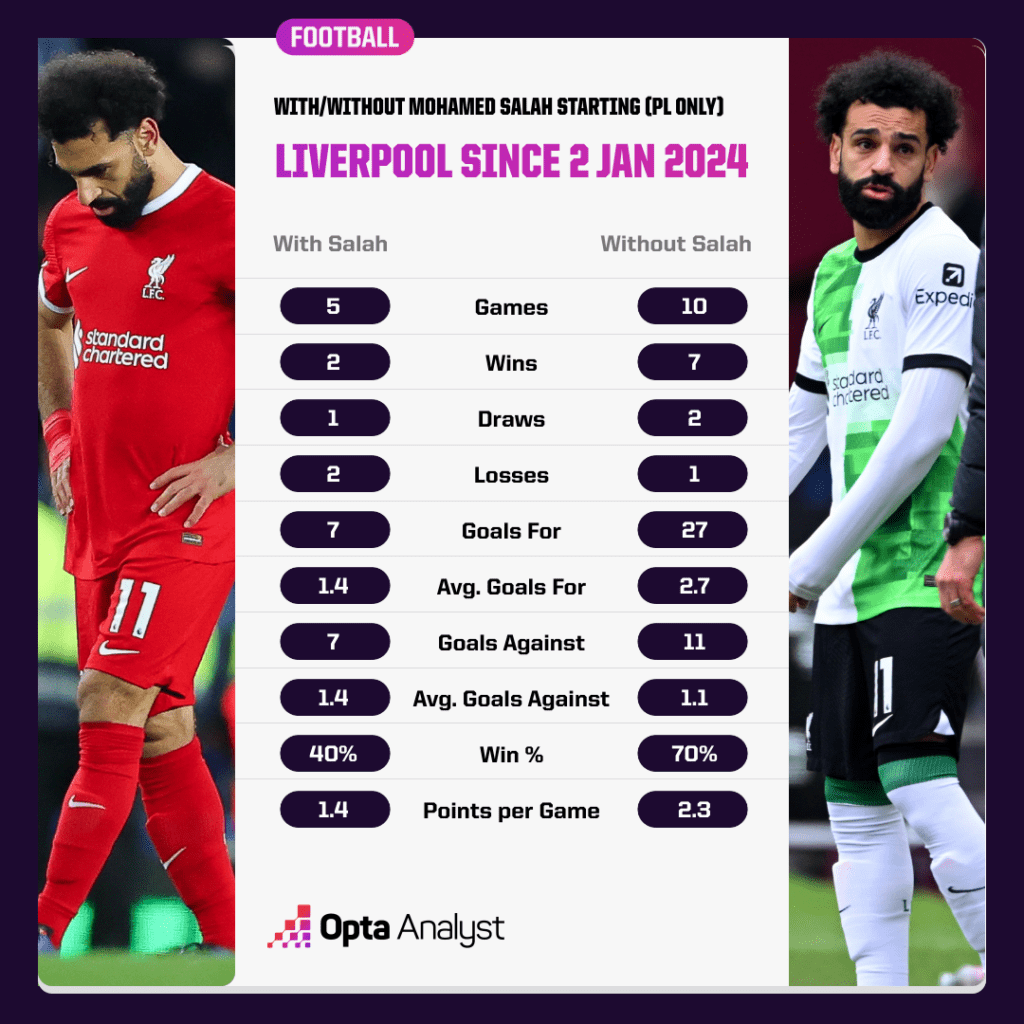
It’s a relatively small sample size, and incorporating the whole season Liverpool’s record with Salah starting improves to a 60% win rate, 2.0 goals for, 1.0 goals against and 2.1 points per game.
Even when Salah has been at his best, it hasn’t always translated into Liverpool reaching their highest heights. In fact, Salah’s worst season for shot conversion was the year Liverpool won the league with 99 points. His three worst seasons for shot conversion were all seasons when the Reds accumulated over 90 points.
All that said, this is Mo Salah we’re talking about. He has won Liverpool plenty of games and trophies with his goals, and his first game back after AFCON was a virtuoso sub appearance in a 4-1 win at Brentford, where he recorded a goal and an assist and looked like he hadn’t missed a beat.
He suffered another injury that kept him out until the 5-1 win at Sparta Prague in the Europa League last 16. This recent run of poor form has come across 13 games in less than two months, and it hardly seems fair to write off a man who has consistently been one of the best players in the world over seven years because of a bad couple of months. After all, according to Opta’s Player Radars, the player in Europe’s top five leagues whose output is closest to Salah’s this season is Kylian Mbappé, and he’s pretty good.
It seems unlikely that Salah is ‘finished’ as some have provocatively suggested. Whether he just needs to ride this period out or can maybe reinvent himself in a new role, there is little chance that the reign of the Egyptian King has ended.
Whether that’s continuing to rule at Liverpool in the unknown of the post-Klopp era is perhaps the more pertinent question.
Enjoy this? Subscribe to our football newsletter to receive exclusive weekly content. You should also follow our social accounts over on X, Instagram, TikTok and Facebook.
